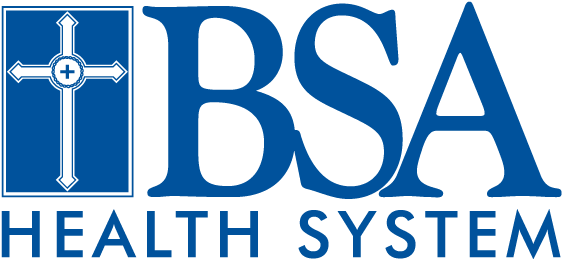What are our biggest obstacles to eating healthy?
When was the last time you ate fast food? When was the last time you ate a healthy meal prepared at home? Is one of those questions more difficult to answer than the other?
March is National Nutrition Month and we’re taking a closer look at the obstacles to eating a healthy diet. BSA Clinical Nutrition Manager, Amanda Ast, MS, RD/LD says there are two major forces at play – lack of planning and too many available foods. Together, they have created a fast food culture in which thinking ahead about food choices is no longer required. The impact on our health is undeniable as we battle a growing obesity epidemic in our country leading to a number of medical conditions. Yet, with the spotlight on nutrition this month, there are measures we can take to help remove some of those obstacles to healthy eating for our own families.
Lack of planning
First, we need to face the reality of our fast-paced lives. “Lack of planning leads to disorganization and falling victim to fast food or prepackaged foods,” says Ast. “With an abundant supply of constantly available foods and beverages, it seems we can get away without planning meals and still there is always something right around the corner to eat. However, just because it is available, does not make it OK for our bodies.”
Lack of nutrition knowledge
Second, Ast says less is passed down to younger generations about healthful eating and an understanding of nutrition. “There is a significant deficit of nutritional basics in our culture today,” she says. “With less cooking and food preparation done at home, as well as being taught in school, the deficit is met with an excessive supply of unhealthy food options.” Coupled with more screen time and less active time, daily decisions are snowballing into a pattern of unhealthy lifestyles and becoming the new normal. On average, one in four people eat fast food every day, with 20 percent of all meals eaten in a car.
“Keeping it simple should be the first step,” Ast explains to help turn the tide. “Plan ahead.”
Meal Planning Made Simple
Planning meals helps remove the guesswork out of the question, “What’s for dinner?” It helps alleviate feeling too tired to cook and stopping through the drive-thru on the way home. Planning means that you have everything you need within reach when it is time to prepare meals. Those are big advantages to eating healthy meals. Sounds simple, right? There is discipline in planning. It takes a commitment. Ast says one way to stay on track is working a week or more in advance. “Consider what is happening next week,” she adds. “Think about what you will be doing. Do you have a soccer game Thursday night? You’ll need something that is already prepared, like a slow-cooker meal.”
One way to get started is to streamline the process of choosing meals. For breakfast and lunches, limit to two or three options each for the week. Make sure you have at least one serving of fruit or vegetable with each meal. For dinners, start with some of your family’s favorites. Take a look at what you already have in your refrigerator, freezer and pantry. Then decide what you need to buy at the grocery store. Make a list and include the number of items you need. Keep healthier options in mind like olive oil instead of butter, whole grains and limit products with saturated and trans fats.
Vegetables and Meat
Ast says you can also save money at the grocery story by choosing canned or frozen fruits and vegetables for some of your produce for the week. “Fresh is best, but some fruits and vegetables provide more nutrition when gently steamed,” she explains. “A quick trick is to utilize the microwave. Place plastic wrap over vegetables with two tablespoons to ¼ cup of water in a bowl. Steam for one to two minutes. Frozen and canned vegetables can be cooked this way too.” Drain and rinse canned vegetables to reduce the amount of sodium by as much as 40 percent.
When it comes to meat, Ast says there are healthy and affordable options. “Choose lean meat cuts like round or loin,” she says. “Look for sales and stock up your freezer. Consider how much you really need for a meal. Cooking for one person, for example, would require no more than three to four ounces of meat.”
For more tips and information on planning healthy meals for your family, visit the Academy of Nutrition and Dietetics website or the MyPlate website by the U.S. Department of Agriculture.
Raising a Healthy Generation
Parents, grandparents and caregivers have a significant influence over establishing children’s eating habits from a very young age. Researchers have found that as early as two weeks old, infants may begin to accept the bitter taste associated with vegetables, compared to the sweet tastes they prefer from birth. Though they are not introduced to solids foods until around the age of six months, baby can adapt their preferences to what they are provided. At this age they are more open to trying new foods than toddler years, for example.
Motivation to eat healthy, researchers believe, is a learned behavior. If we want our children to eat right, then parents, siblings and other family around them need to eat right. Parents need to continue to offer a variety of foods to children, even if they are initially rejected. “Some new foods may need to be reintroduced as many as five to ten times before a child will accept that new food,” explains Ast. “Some children may prefer or reject fruits or vegetables based on how they are prepared or served. Establishing an appetite for healthy eating may require a little creativity!”
As children get older, parents and grandparents can include them in meal planning decisions, as well as allow them to make choices at the grocery story. From picking a new fruit or vegetable to try each week to choosing one of the dinners for that week, children are more likely to be motivated to eat healthy when they are involved.
Read more on our website about nutrition and healthy food.




